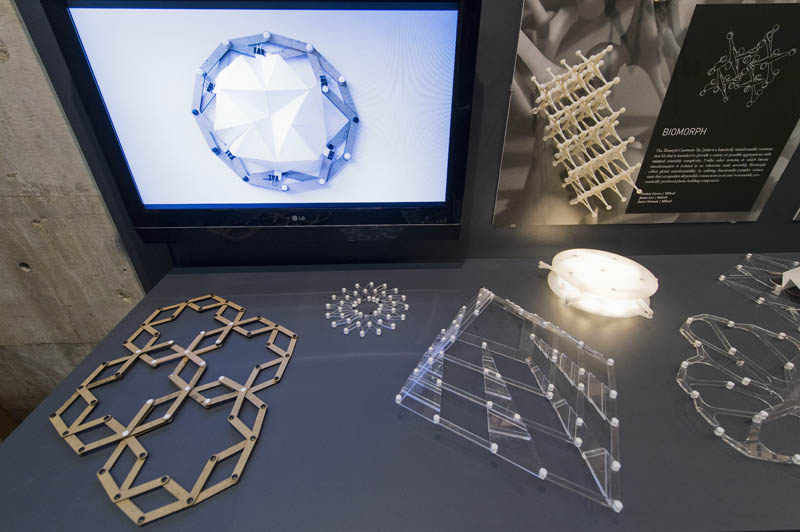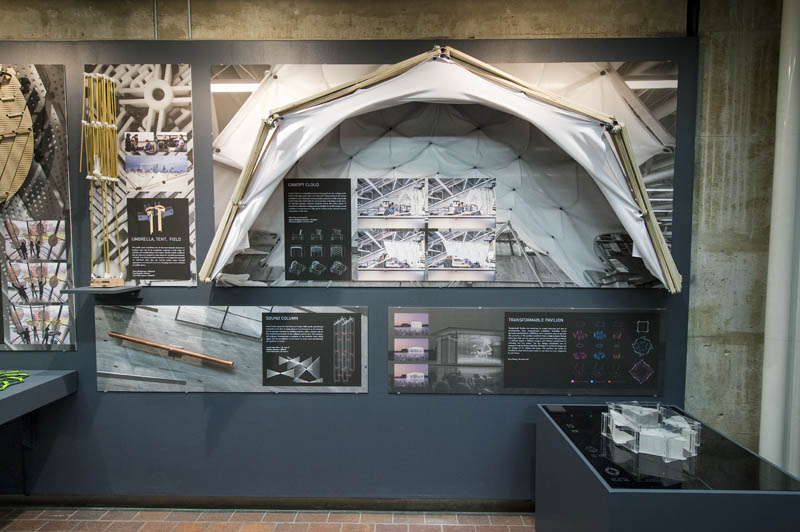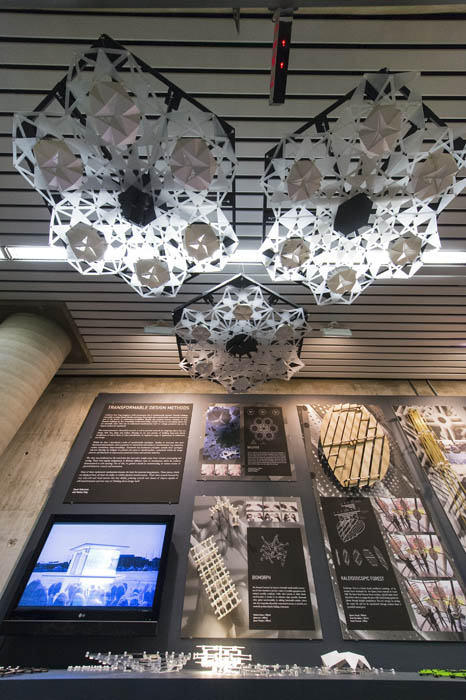Transformable Design Methods
January 21, 2013–February 24, 2013
Chuck Hoberman, Curator
Nathan King, Co-curator
Architects have long imagined a built environment that is fundamentally dynamic. Portable buildings, retractable coverings, kinetic facades, and spaces that morph: these transformable structures have become part of the lexicon of architectural possibilities. Despite this persistent interest, examples of truly dynamic buildings are few. Accordingly architectural design remains focused on developing objects that are essentially static. How can we understand transformation itself as a design parameter that can be shaped, crafted and optimized?
This course presented a theoretical overview as well as practical methods for designing objects that can change their size, shape and surface. Drawing on my own practice of building large-scale kinetic installations, as well as those of other practitioners, we explored a range of applications in architecture and design.
Within the class, I introduced a series of transformable typologies: families of structures that share functional characteristics, such as patterns of connectivity and modes of transformation (e.g. expansion, surface modulation, shape-morphing). Geometric and mechanical principles underlie these typologies, rule-sets allowing the designer to consider two types of transformation – parametric within the design process, and kinematic as expressed in actual movement and real-time behavior.
The class was predicated on the conviction that innovative insight arises from constant prototyping and testing. There were regular assignments to fabricate different types of mechanisms which the students demonstrated at each meeting. Out of this, we gained a hands-on understanding of various modes of physical behavior, control, and interaction.
Many of these exploratory mechanisms became the basis for semester-long projects. These pieces, which are displayed here, all share the ability to exhibit physical transformation. Their value extends beyond the very real craft and visual interest that they display, pointing towards new classes of objects capable of self-transformation and new ways of thinking about design itself.
Chuck Hoberman
with Nathan King


